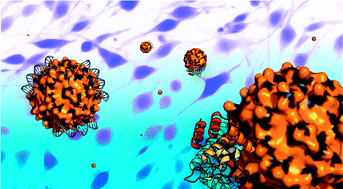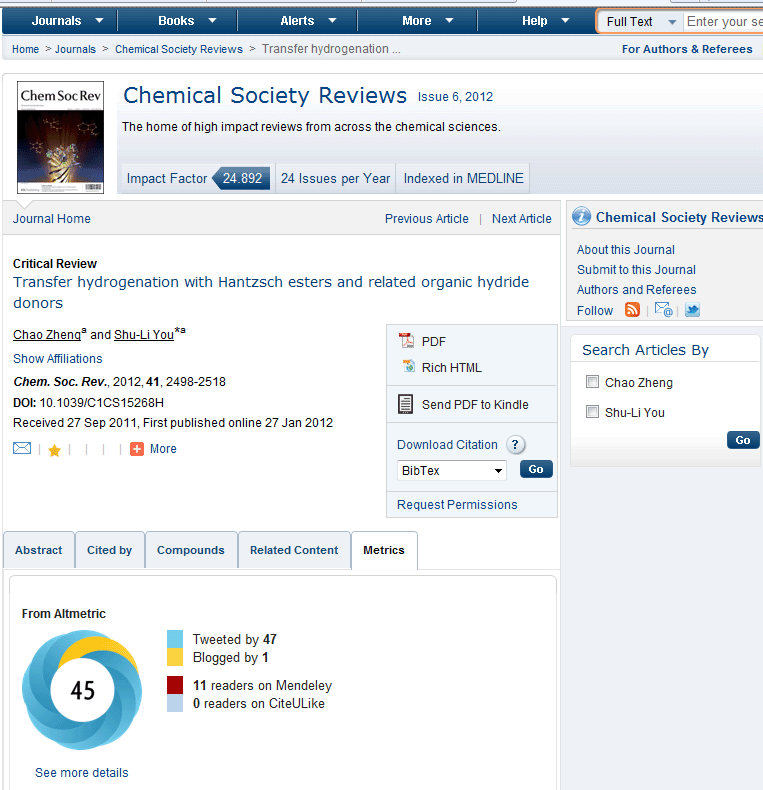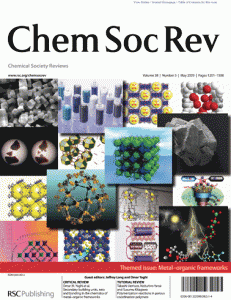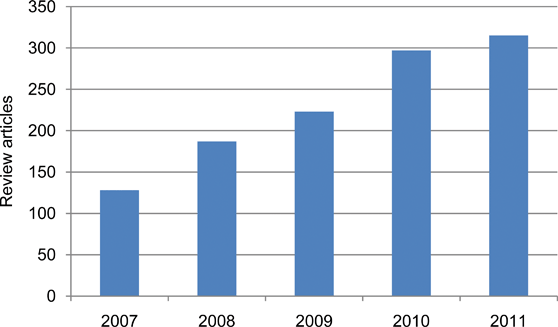There are many diagnostic and therapeutic applications within medicine where nanoparticles can find use, as Chem Soc Rev’s forthcoming Nanomedicine issue demonstrates. Nanoparticles made from a diverse range of materials such as gold, iron, silica and polymers bring specific benefits to the medical field. However, these nanoparticles need to be designed so that they can be delivered to and interact with the target biosystem. This is achievable by changing the nanoparticle surface coating as Vincent Rotello and co-workers illustrate in their Highlight review.
 Just as you would dress up to go to a 5 star restaurant, swapping your jeans and T-shirt for a suit jacket and tie, a nanoparticle’s coating needs to be tailored to suit the application. Nanoparticle ‘coats’ can be made from a variety of ‘fabrics’ which include small molecules that change the surface charge and therefore the cellular uptake properties. Polymer coatings can create ‘stealth’ nanoparticles, preventing serum protein adsorption thus increasing circulation times in the body, whilst other polymers act as gate keepers allowing drugs to escape from nanocages only when desired. If the coat is made from biomolecules, they can be selected so the resulting nanoparticle will actively target specific cancerous tumours.
Just as you would dress up to go to a 5 star restaurant, swapping your jeans and T-shirt for a suit jacket and tie, a nanoparticle’s coating needs to be tailored to suit the application. Nanoparticle ‘coats’ can be made from a variety of ‘fabrics’ which include small molecules that change the surface charge and therefore the cellular uptake properties. Polymer coatings can create ‘stealth’ nanoparticles, preventing serum protein adsorption thus increasing circulation times in the body, whilst other polymers act as gate keepers allowing drugs to escape from nanocages only when desired. If the coat is made from biomolecules, they can be selected so the resulting nanoparticle will actively target specific cancerous tumours.
Those researchers who modify the surface functionality of nanoparticles can be considered as master tailors who must make sure that the coat they prepare is appropriate for the occasion. This means ensuring it is stable in biological media; is non-cytotoxic; and specific for particular cells or tissues. For those starting out in this field, Rotello’s Highlight review article provides a general overview of the materials/fabrics available for preparing nanoparticle coats. When you discover a surface coat that improves the efficiency of your nanoparticles to treat a disease, you can’t help but say “Suits you sir!”
Read ‘Surface functionalization of nanoparticles for nanomedicine’ >
The Nanomedicine themed issue will be online soon. Sign up to the Chem Soc Rev e-alert to be notified when it is available.
Posted on behalf of Iain Larmour, Chem Soc Rev web science writer.












 Just as you would dress up to go to a 5 star restaurant, swapping your jeans and T-shirt for a suit jacket and tie, a nanoparticle’s coating needs to be tailored to suit the application. Nanoparticle ‘coats’ can be made from a variety of ‘fabrics’ which include small molecules that change the surface charge and therefore the cellular uptake properties. Polymer coatings can create ‘stealth’ nanoparticles, preventing serum protein adsorption thus increasing circulation times in the body, whilst other polymers act as gate keepers allowing drugs to escape from nanocages only when desired. If the coat is made from biomolecules, they can be selected so the resulting nanoparticle will actively target specific cancerous tumours.
Just as you would dress up to go to a 5 star restaurant, swapping your jeans and T-shirt for a suit jacket and tie, a nanoparticle’s coating needs to be tailored to suit the application. Nanoparticle ‘coats’ can be made from a variety of ‘fabrics’ which include small molecules that change the surface charge and therefore the cellular uptake properties. Polymer coatings can create ‘stealth’ nanoparticles, preventing serum protein adsorption thus increasing circulation times in the body, whilst other polymers act as gate keepers allowing drugs to escape from nanocages only when desired. If the coat is made from biomolecules, they can be selected so the resulting nanoparticle will actively target specific cancerous tumours.








